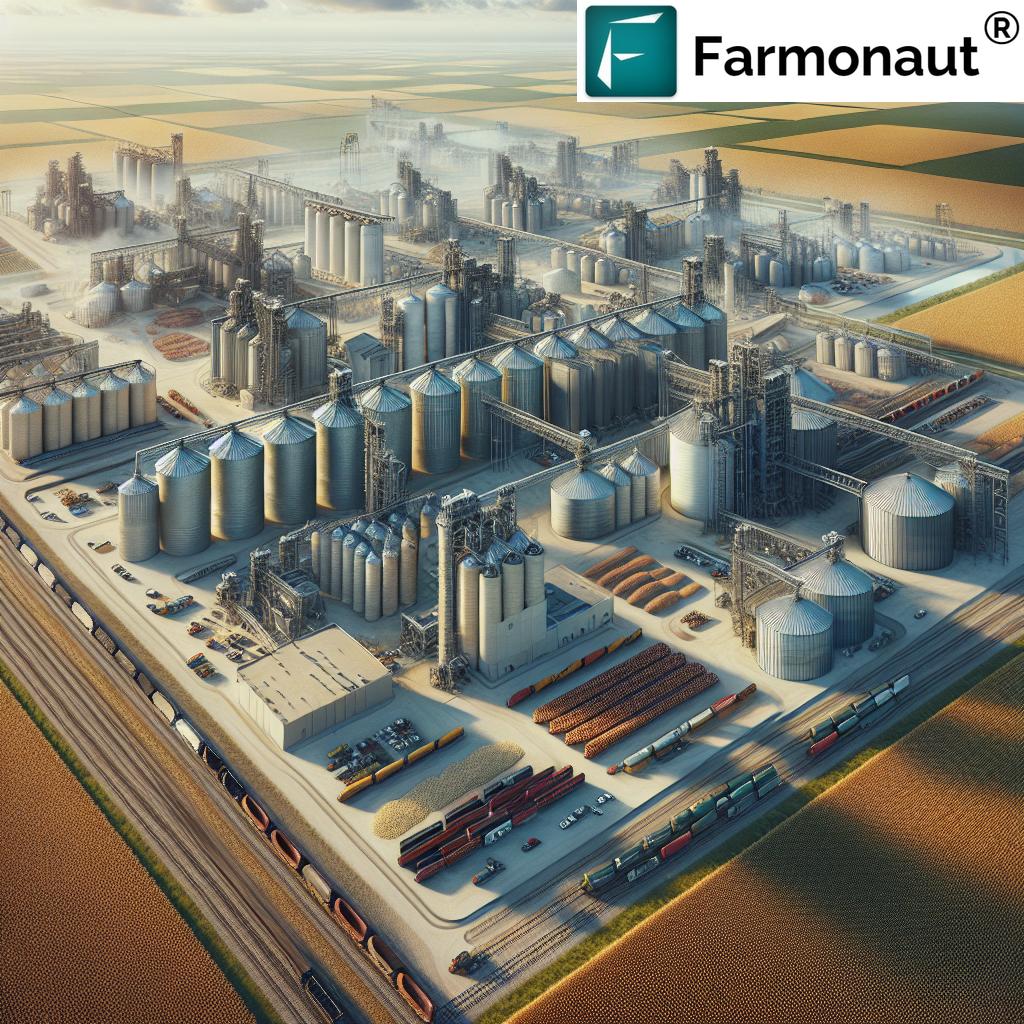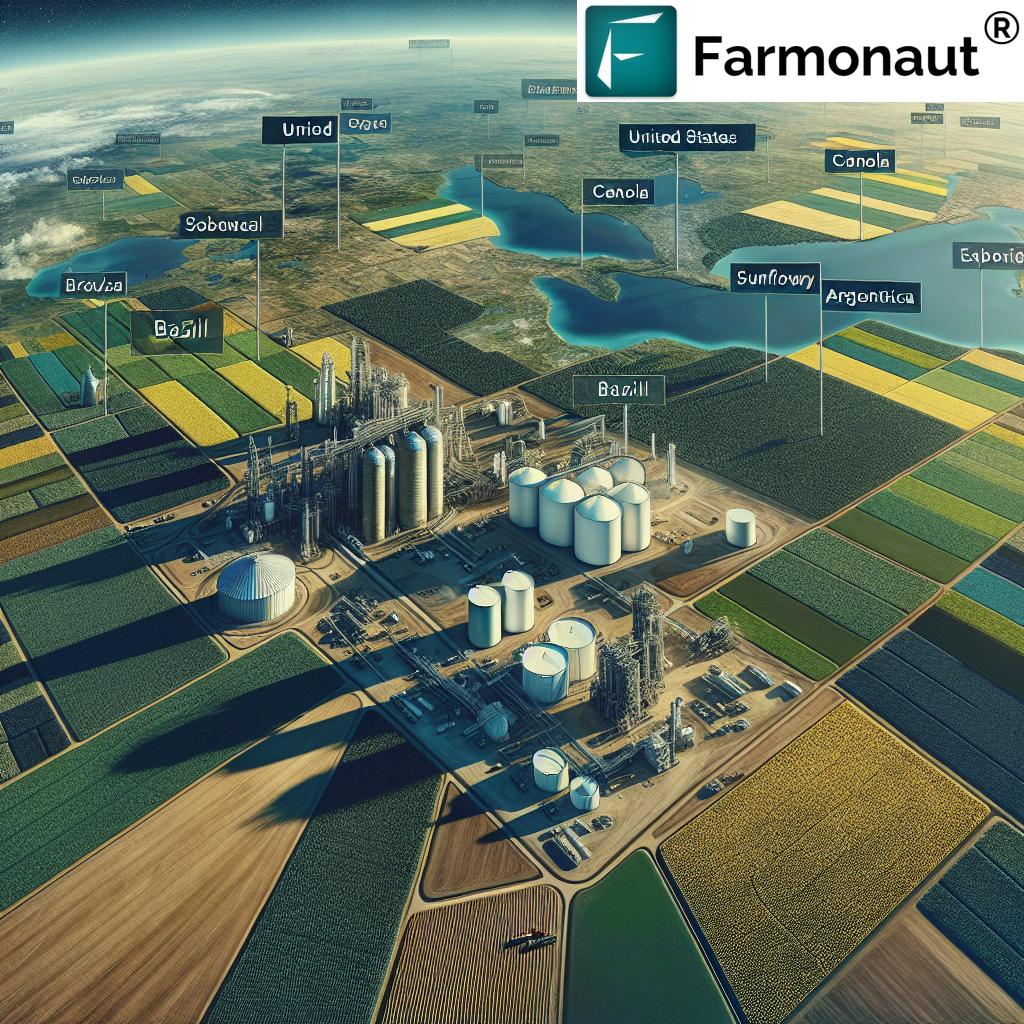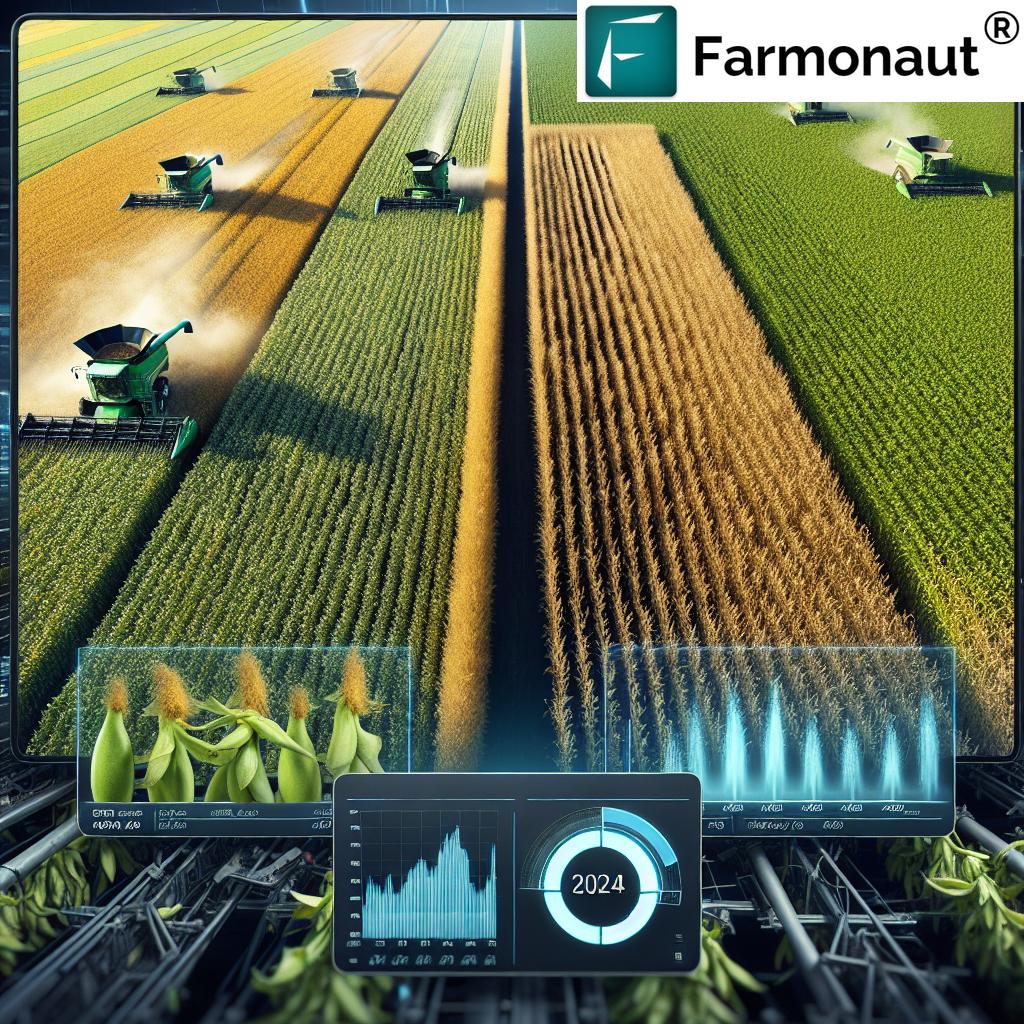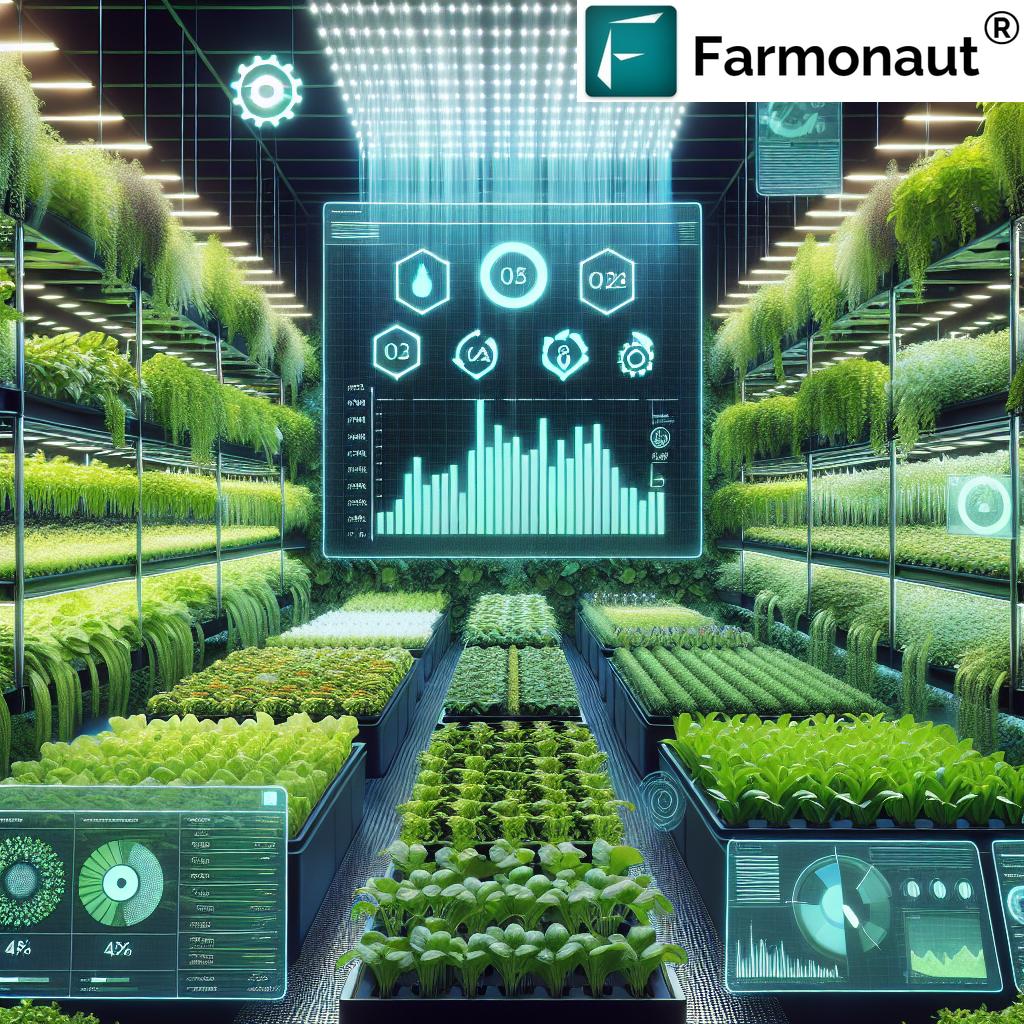Agricultural Commodities News: Agriculture News Maharashtra 2025 – Latest Prices, Policies, and Outlook
“Maharashtra’s sugarcane production forecast for 2025 exceeds 85 million tonnes, shaping India’s key commodity markets.”
Introduction: The Changing Agriculture Landscape in Maharashtra
Agricultural commodities news and agriculture news Maharashtra in 2025 capture a story of intense transformation. Maharashtra, one of India’s most agriculturally significant states, is witnessing profound change shaped by evolving market dynamics, fluctuating crop prices, policy interventions, and the rapid adoption of technology. As we step into 2025, staying abreast of the latest news—from updated MSP structures to emergent drought-resistant varieties, and digital farming practices—has become crucial for farmers, traders, and all stakeholders. The sector’s outlook reflects both immense opportunities and daunting challenges.

This comprehensive blog delves into the trends, prices, commodities, and policies defining Maharashtra’s agricultural sector in 2025, referencing trusted agriculture news marathi, the latest market data, and policy updates. Whether you are a Maharashtra farmer, agri-business owner, planner, or enthusiast, this guide equips you to navigate the complex landscape of agricultural commodities news and make informed decisions for growth and resilience.
Current Agricultural Trends in Maharashtra 2025
The diversity of Maharashtra’s agricultural ecosystem is mirrored in its cropping patterns, which now include everything from cash crops like sugarcane and cotton to staple grains such as millet and pulses. In 2025, the state remains the foremost flashpoint for trends driving Indian agriculture—climate adaptation, technological adoption, and market-oriented policy reforms.
- Sugarcane remains dominant, but diversification is accelerating as growers respond to recurring droughts, sugar price volatility, and sustainability concerns.
- Soybean, chickpea, and oilseeds are gaining ground, supported by government MSP attention to reduce dependence on imported edible oils.
- There is a notable shift towards horticultural crops (onion, grapes, pomegranate, tomatoes), which tap into both domestic and export markets—a theme consistently noted in recent agriculture news Maharashtra.
- The integration of technology—from AI-driven satellite monitoring to mobile price alerts—is improving market access and risk management for even smallholders.
- Maharashtra’s climate variability is prompting wider adoption of drip irrigation, rainwater harvesting, and agroforestry for enhanced resilience and sustainable practices.
Discover agri-business ideas shaping market trends and commodity opportunities in 2025.
Why Current Trends Matter: Maharashtra’s Contribution to the National Economy
Fluctuations in commodity prices and production (highlighted in national and local agriculture news Maharashtra) directly impact not only farmer incomes but also India’s food security, trade balances, and rural employment.
Maharashtra’s share in India’s total sugarcane production now exceeds 25%, and it leads in pulses, onions, and horticultural output. The state’s role has thus become pivotal in stabilizing national markets and ensuring affordable prices for millions.
Learn about regenerative agriculture, soil health, and climate-smart practices—essential for a sustainable sector outlook in 2025.
Agricultural Commodity Market Dynamics – Focus on 2025
A close examination of agricultural commodities news in Maharashtra reveals highly dynamic market conditions. Shifting policies, global uncertainties, and variable domestic and export demand are collectively shaping market behavior across the state.
1. Price Fluctuations and Influencing Factors
- Monsoon Patterns: Unpredictable rainfall in 2025 has led to both bumper and patchy harvests, causing year-on-year volatility in commodity prices, especially for cotton and pulses.
- Input Costs: There has been a sustained rise in expenses for seeds, fertilizers, labor, and energy—another headline recurring in agriculture news marathi and national reports.
- Global Market Shocks: Disruptions in global logistics and trade (due to geopolitical tensions and new tariffs) have steered both domestic prices and export opportunities, especially for onions and grapes.
Ongoing policy interventions, such as Minimum Support Price (MSP) hikes and export incentives, have become vital levers—providing much-needed safety nets for smallholders, as reflected in agricultural policy news Maharashtra. The effective implementation of MSP for crops like pulses, cotton, and soybean has directly impacted production incentives, crop choices, and farm income levels.
Explore how satellite and AI-based crop monitoring is shaping commodity insights and market management in Maharashtra (2025).
Price Movements and Major Commodities in Focus – Agriculture News Maharashtra 2025
Agricultural commodities in Maharashtra include a diverse mix—from sugarcane, cotton, and soybean to horticultural produce like grapes, onions, and oranges. Each commodity market is experiencing its own unique trends and challenges, as regularly covered in both agricultural commodities news and local agriculture news marathi.
Key Commodity Highlights
- Sugarcane: Despite its economic importance, sugarcane farming faces growing scrutiny over water use and is increasingly threatened by drought. Yet, it remains a mainstay of Maharashtra’s rural economy and export ambitions.
- Cotton: Ongoing price volatility and pest outbreaks (e.g., pink bollworm) challenge profitability, spurring technology adoption and demand for more resilient seed varieties.
- Soybean & Pulses: Rising demand for plant protein (both domestically and abroad) has driven higher prices, making soybean an attractive alternative crop.
- Onions: Maharashtra’s onion output influences national price trends, with policy changes around export bans and stock limits affecting market stability.
“Soybean prices in Maharashtra surged by 12% in early 2025, reflecting strong demand and shifting market dynamics.”
Watch how AI-powered insights (like those from Farmonaut’s Jeevn) help address price volatility and enhance productivity.
Maharashtra Market Snapshot – 2025 (Select Commodities):
- Sugarcane (Estimated Avg. Price: ₹3250/quintal): Prices stable, but water scarcity concerns temper profit margins.
- Soybean (Estimated Avg. Price: ₹6100/quintal): Up 12% YoY, fueled by higher demand and lower global stocks.
- Cotton (Estimated Avg. Price: ₹7200/quintal): Slight dip (-3%) amid pest management challenges.
- Pulses (Chickpea): MSP raised, production incentives offered, but market supply still tight.
- Onion: Highly variable prices (₹1600–₹3000/quintal) with volatility driven by policy and climate.
Modern technology, including AI drones, is rapidly transforming commodity monitoring and crop management in Maharashtra’s farming sector.
Commodity Exchange and Export Opportunities
Maharashtra’s proximity to Mumbai and Jawaharlal Nehru ports significantly enhances its export competitiveness, especially for grapes, onions, and spices. However, ongoing supply chain uncertainties globally continue to influence prices and demand. Farmers and trading firms increasingly rely on platforms like NCDEX for real-time commodity price tracking, risk management, and market timing.
For large-scale producers, Farmonaut’s Large Scale Farm Management Platform provides robust satellite-based monitoring and AI-powered analytics.
This enables better tracking of crop health, yield estimation, and timely interventions, positively influencing incomes and market positioning.
Government Policies and Schemes Impacting the Agricultural Sector
Agriculture news Maharashtra in 2025 emphasizes the critical role played by government policies and support schemes. These interventions not only shape the region’s commodity mix, but also underpin major market trends and the resilience of farmer livelihoods.
Important Schemes & Policy Developments:
- PM-KISAN: Ongoing direct income support to eligible farmers, helping offset input cost increases and buffer price shocks.
- Maharashtra Krishi Sinchayee Yojana: Expansion of modern and efficient irrigation infrastructure, encouraging adoption of drip and sprinkler systems.
- Soil Health Cards: Rollout of new cycles to encourage balanced fertilizer use and nutrient management for sustainable productivity gains.
- Organic Farming Initiatives: Targeted incentives for districts like Satara and Nashik—helping farmers transition to high-value, sustainable produce with growing market acceptance.
- MSP (Minimum Support Price): Extension of MSP to more crops, higher procurement, and focused procurement drives in pulses, oilseeds, and cotton—providing crucial safety nets and influencing sowing choices.
- Post-Harvest Infrastructure: Government focus on warehouses, cold chains, and rural markets to reduce wastage and improve price realization.

Insurance, Credit, and Blockchain Traceability
Risk mitigation through crop insurance is on the rise, supported by evolving government policies. A major theme consistently covered in agricultural commodities news is increased utilization of satellite-based verification for claims and loan disbursals.
- Farmonaut offers satellite-based crop verification services for loan and insurance use cases (Crop Loan & Insurance). This provides banks and insurers with high-fidelity data, reducing fraud and accelerating disbursement—which ultimately increases access for genuine farmers.
- Blockchain-based traceability solutions are gaining momentum, especially for Maharashtra’s horticultural exports. Farmonaut’s Blockchain Traceability enables end-to-end supply chain transparency and consumer trust—key differentiators in export-driven markets.
See how remote-sensing soil moisture monitoring supports precision agriculture and insurance verification in Maharashtra.
Technology Adoption and Sustainable Practices – Driving the Future
In 2025, agriculture news Maharashtra highlights the unprecedented scale of digital and satellite technology adoption in the state. Decision-support tools and sustainable agriculture initiatives are central to boosting farm productivity, climate resilience, and profitability.
Key Technical and Sustainable Practice Trends
- Precision Farming: Satellite-powered, real-time monitoring delivers field-specific advice: pest outbreaks, water stress, and crop disease are detected early for swift intervention.
- AI & Data Analytics: Farmers, businesses, and government agencies use AI-driven advisory (e.g., Farmonaut’s Jeevn platform) to optimize input use, increase yields, and hedge against market volatility.
- Drip Irrigation & Water Harvesting: Such methods now cover almost 44% of Maharashtra’s irrigated area, a 10% jump since 2022—making drought-prone districts more resilient.
- Agroforestry: Farmers and tribal communities are integrating tree species for land restoration, crop diversification, and supplementary income, aligned with sustainable practices.
- Mobile Price Discovery: Farmer groups are increasingly leveraging apps for real-time price and market access—critical for ensuring competitive returns.
- Resource & Fleet Management: Farms and agri-businesses are increasingly using digital resource allocation and fleet management systems. Farmonaut Fleet Management optimizes machinery logistics, reducing operating costs and environmental impact.
Discover how satellite crop health monitoring via Farmonaut’s solutions enhances data-driven farming in Maharashtra.
Organic Farming & Carbon Footprinting – The New Sustainable Frontier
Adoption of organic practices is being actively incentivized in Maharashtra, with a focus on exports and domestic health-conscious markets. Farmonaut’s Carbon Footprinting Solution provides environmental impact tracking and actionable insights, helping producers and policymakers achieve sustainability targets and regulatory compliance.
Access for Small and Marginal Farmers
A major ongoing challenge is ensuring equitable access to digital tools, credit, and infrastructure for smallholders.
Solutions that offer simplified, web/app access—such as the  and Farmonaut’s mobile and API interfaces (API, Developer Docs), are vital for democratizing technology and bridging the urban-rural digital divide.
and Farmonaut’s mobile and API interfaces (API, Developer Docs), are vital for democratizing technology and bridging the urban-rural digital divide.
See how region-specific satellite mapping, like cotton in Maharashtra, transforms market intelligence for 2025 and beyond.
Maharashtra Agricultural Commodities Trends Table (2025 Estimated)
| Commodity Name | Estimated Price (₹/quintal) |
Price Change vs. 2024 (%) | Main Producing Regions | Key Policy Updates (2025) | Notable Market Trends (2025) |
|---|---|---|---|---|---|
| Sugarcane | ₹3250 | +2% | Kolhapur, Pune, Ahmednagar, Solapur | Increased focus on sustainability, tighter water quotas | Stable exports; drought remains a concern; slight policy-driven price rise |
| Soybean | ₹6100 | +12% | Latur, Amravati, Nagpur, Akola | MSP hike, input subsidies, export facilitation | Strong demand, global shortages, record prices |
| Cotton | ₹7200 | -3% | Yavatmal, Jalgaon, Nanded, Wardha | Pest management support, focused insurance | Volatile markets, pest outbreaks, investment in R&D |
| Pulses (Chickpea) | ₹5400 | +8% | Beed, Nanded, Hingoli, Solapur | Expansion of MSP, procurement drives | Tight supply, crop diversification, high market prices |
| Onion | ₹2200 | +18% | Nashik, Ahmednagar, Pune | Stock limit regulation, export support | High volatility, strong exports, post-harvest investments |
| Grapes | ₹4500 | +7% | Nashik, Sangli, Pune | Export incentives, input cost support | Expanded export markets, quality certifications trending |
| Millet (Jowar/Bajra) | ₹3100 | +3% | Solapur, Ahmednagar, Beed | Promotion of nutritious grains, MSP extension | Rising demand in health-conscious segment, moderate price rise |
Outlook: Challenges and Opportunities for Maharashtra’s Farming Sector in 2025
Agricultural commodities news, agriculture news marathi, and policy updates in 2025 reveal a sector balancing adaptation, innovation, and tradition. Key opportunities and risks for Maharashtra’s agriculture sector include:
- Climate Change: Increased frequency of droughts and extreme weather continues to threaten productivity and exacerbate market volatility.
- Technology Adoption: Rapid, yet uneven, adoption of digital tools, satellite imagery, and AI-based advisory fosters increased productivity—but access for smallholders requires persistent support.
- Government Schemes: Continued effectiveness of MSP, insurance, and post-harvest policies remains critical for safeguarding rural livelihoods.
- Market Diversification: Farmers increasingly embrace crop diversification, including horticulture and specialty crops—reducing market dependency and enhancing resilience.
- International Trade: Maharashtra’s major ports open up strong export prospects, but global uncertainties and competition require agile market intelligence and quality certifications.
Learn more about how real-time satellite monitoring helps farmers and agencies adapt to changing agricultural conditions in 2025.
Critical Paths for Stakeholders in 2025 and Beyond
- Building Resilience: Investments in drought-resistant crops, modern irrigation, and sustainable practices are vital for protecting against climatic shocks and ensuring food security.
- Education & Capacity Building: Ongoing training and digital literacy programs are crucial for enabling widespread, effective use of new tools and data.
- Infrastructure Development: Improved rural connectivity, warehousing, cold chains, and processing units are necessary for minimizing wastage and maximizing returns in competitive markets.
- Sustainable Resource Management: Monitoring carbon footprint (see Farmonaut’s solution) and encouraging agroforestry and organic farming will help meet future environmental regulations and consumer expectations.
Our diverse solutions—ranging from large scale farm management to carbon footprinting, blockchain traceability, and satellite-driven API integration—empower Maharashtra’s agricultural sector to face the challenges of 2025 with resilience, transparency, and profitability.
The Role of Farmonaut: Empowering Maharashtra’s Agriculture in 2025
As a leading satellite technology provider, we at Farmonaut deliver a suite of comprehensive, affordable, and user-friendly solutions for Maharashtra’s agricultural sector. By leveraging satellite imagery, AI analytics, blockchain verification, and resource management tools, we empower farmers, businesses, governments, and financial institutions.
- Satellite-Powered Crop Monitoring: Our platform tracks field and regional crop health (NDVI), irrigation needs, and pest/disease outbreaks, providing farmers and agronomists with timely, actionable insights.
- AI Advisory & Decision Support: The Jeevn AI advisory system analyzes real-time data, climate patterns, and input trends to enhance farm-level productivity and risk resilience across Maharashtra.
- Blockchain Traceability: Secure, transparent supply chains are facilitated, especially for high-value Maharashtra exports such as grapes, onions, and organic produce.
- Access via Web, Mobile & API: We offer streamlined tools for individuals, businesses, and developers—making the latest agricultural commodities news and field insights accessible anytime, anywhere across the state.
- Environmental Impact Monitoring: Real-time carbon and water tracking enables Maharashtra’s sector to align with national sustainability goals and climate change adaptation strategies.
- Risk Management Tools: Our platform supports financial institutions in verifying crop health for loan and insurance applications, encouraging wider access to formal credit and risk coverage for Maharashtra farmers.
FAQ – Agricultural Commodities News: Agriculture News Maharashtra 2025
- 1. What are the most important agricultural commodities in Maharashtra for 2025?
- The key commodities include sugarcane, soybean, cotton, pulses (such as chickpea), onions, grapes, and millet. These dominate the state’s production, market dynamics, and export profile according to the latest agricultural commodities news for 2025.
- 2. How has climate change affected Maharashtra’s farming sector in 2025?
- Recurring droughts and variable monsoon patterns have increased the importance of sustainable practices, efficient irrigation (like drip systems), climate-resilient crop varieties, and data-driven risk management across the state.
- 3. What government schemes are supporting Maharashtra’s farmers in 2025?
- Major schemes include PM-KISAN (income support), Krishi Sinchayee Yojana (irrigation), and expanded MSP coverage for key crops. There is also increased investment in organic farming, post-harvest storage, insurance, and technology adoption.
- 4. How can technology enhance farming in Maharashtra?
- Technology—such as satellite crop monitoring, AI-driven advisory, mobile market linkage apps, and resource management systems—improves yields, reduces risk, and increases market access, especially for smallholders and medium-scale producers.
- 5. Where can farmers and agribusinesses access real-time commodity news and insights?
- Platforms like Farmonaut’s web, Android, and iOS applications (access here) provide satellite-driven insights, market news, map-based monitoring, and more, tailored for Maharashtra’s dynamic sector.
- 6. What steps should farmers take to reduce market volatility risk in 2025?
- Diversifying crops, adopting insurance, using real-time data platforms for price alerts, and leveraging government procurement schemes are all strategies proven to reduce risk amid price and weather uncertainties in Maharashtra.
- 7. Are organic and sustainable practices financially viable for Maharashtra farmers?
- Yes, rising domestic and export demand, coupled with government incentives and tools like carbon tracking (see Farmonaut’s offering), ensure premium pricing and regulatory compliance for progressive farmers.
Conclusion: Staying Ahead in Maharashtra’s Agricultural Sector
The agricultural commodities news and current agriculture news Maharashtra in 2025 clearly showcase a sector undergoing rapid evolution. Farmers, traders, and policy-makers are adapting to market, climate, and policy challenges by embracing technology, diversifying crops, and making smarter risk management choices. Yet critical challenges remain—especially for smallholders needing better access to finance, information, and infrastructure.
By leveraging affordable, data-driven, and user-centric solutions (such as those offered by Farmonaut), Maharashtra’s rural communities can ensure sustainable livelihoods, boost productivity, and play a robust role in India’s food security and economic growth story. Staying informed, agile, and collaborative will be key to thriving in this dynamic landscape for 2025 and beyond.
To access the most up-to-date agricultural commodities news, real-time crop advisories, and cutting-edge satellite insights for Maharashtra and beyond—download the Farmonaut app or integrate our API today!













